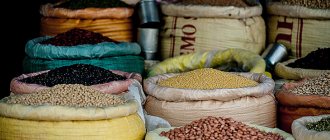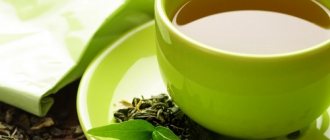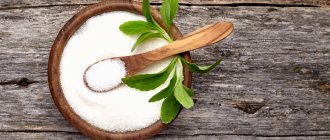Matcha, or matcha as it is called, is a powder made from specially grown green tea leaves that is brewed into a bright green drink. You can find matcha on restaurant menus more and more often, Instagram is full of photos of soft green lattes, and adherents of a healthy lifestyle sing odes to the numerous medicinal properties of this tea. Let's figure out what kind of tea it is, how to prepare it, and how matcha is really beneficial.
What is matcha
Matcha, or matcha, is a powder made from young tea leaves.
Unlike loose leaf tea, matcha is not poured with boiling water and filtered, but dissolved in water. The bright green drink appeared in Japan at the end of the 12th century, when Buddhist monks brought tea seeds to the country from China and invented their own method of growing the plant.
Photo: Nob2020/Shutterstock
Young tea bushes for matcha in the spring are covered with special structures made of reed and straw. The shade allows the tea to retain its vibrant color and accumulate more amino acids Antioxidant Properties and Nutritional Composition of Matcha Green Tea and chlorophyll. To prevent the breakdown of beneficial substances, the leaves are steamed and dried for several weeks, after which they are ground into a fine powder.
Traditionally, matcha was brewed in a special way and drunk without additives, but nowadays not only various drinks, but also desserts have been prepared based on this product. Some even add it to main dishes.
Chemical composition
Real matcha tea from Japan contains the following beneficial components:
- complex of vitamins B, A, E, P;
- trace elements: iron, potassium, iodine, magnesium, fluorine, calcium, zinc;
- ascorbic acid;
- antioxidants.
The tea has a sweetish taste with a hint of bitterness. It is recommended to drink it without sugar, honey or other sweeteners. The drink has a thick, rich color (both before and after preparation).
The caffeine content in one cup of the drink is identical to the amount in one cup of brewed coffee.
100 g of the finished drink contains 290 kcal.
What are the benefits of matcha tea?
Outside of Japan, the drink has become popular primarily because of its beneficial properties. Scientists have found that matcha has a positive effect on health.
Protects cells from damage
Matcha, like any tea, contains a lot of catechins - natural antioxidants. These substances protect the body from free radicals that destroy cells, causing aging and cardiovascular diseases.
When brewing regular tea, the catechin-rich leaves are discarded. And matcha powder is completely dissolved in water, so there are 137 times more antioxidants in such a drink.
Helps protect the liver
In 2021, scientists at The Effect of Green Tea Extract Supplementation on Liver Enzymes in Patients with Nonalcoholic Fatty Liver Disease selected 80 people with nonalcoholic fatty liver disease. They were asked to drink matcha extract daily. And after 90 days, the condition of the subjects improved.
Another study of Matcha, a powdered green tea, ameliorates the progression of renal and hepatic damage in type 2 diabetic OLETF rats, found that this tea helped reduce liver and kidney damage in rats with type 2 diabetes.
The analysis of The effect of green tea intake on the risk of liver disease: a meta analysis, conducted by Chinese doctors, helped to conclude that people who drink drinks made from green tea leaves are less likely to suffer from liver disease. However, scientists themselves are in no hurry to call matcha a panacea. Long-term clinical studies are needed to evaluate its effectiveness in preventing hepatitis or cirrhosis.
Useful for preventing brain diseases
Catechins protect Cell signaling pathways in the neuroprotective actions of the green tea polyphenol (-)-epigallocatechin‑3‑gallate: implications for neurodegenerative diseases the brain from cell death. It is the death of neurons that causes dementia and Parkinson's and Alzheimer's diseases. To reduce the risk of these disorders in old age, scientists advise consuming tea and other foods containing antioxidants.
Reduces the risk of heart disease
Several groups of researchers from different countries have concluded that regular consumption of matcha in combination with a balanced diet helps reduce the amount of “bad” cholesterol Green tea intake lowers fasting serum total and LDL cholesterol in adults: a meta‑analysis of 14 randomized controlled trials, negative affecting the functioning of the cardiovascular system.
Helps reduce bad breath
Japanese scientists in 2008 decided to find out how well different products eliminate bad breath. For comparison, we chose toothpaste, chewing gum, mint, green tea leaf powder and parsley oil. The results of the study showed that in terms of antibacterial and deodorizing properties, chemical compounds from matcha are superior to their competitors.
Improves attention and memory
Matcha contains a lot of caffeine, which is known to stimulate brain function. Scientists have found that this tea can improve An intervention study on the effect of matcha tea, in drink and snack bar formats, on mood and cognitive performance, attention, reaction speed and memory. The drink has an advantage over affordable and no less invigorating coffee: thanks to the special compound L‑theanine, A double‑blind, placebo‑controlled study evaluating the effects of caffeine and L‑theanine both alone and in combination on cerebral blood flow, cognition and mood after a few hours after a cup of matcha you will not be overtaken by a sharp loss of strength.
Helps you lose weight
Take a closer look at matcha if you want to lose weight, because the antioxidants of this tea accelerate Effects of encapsulated green tea and Guarana extracts containing a mixture of epigallocatechin‑3‑gallate and caffeine on 24 h energy expenditure and fat oxidation in men metabolism and increase Green tea extract ingestion, fat oxidation, and glucose tolerance in healthy humans fat burning by 17%. However, scientists warn that such results can only be achieved with moderate physical activity.
Supposedly reduces social stress levels
In the homeland of the match, an unusual study was conducted in 2021: a group of mice were given tea for two weeks and their behavior was observed after contact with their relatives. It turned out that the level of social anxiety of the subjects decreased. Influence of continued ingestion of matcha on emotional behaviors after social stress in mice and the mice could continue communication painlessly. But scientists note that such an effect is only possible when consuming very high-quality matcha with a certain ratio of caffeine and amino acids.
May help prevent cancer
One type of catechin that is particularly abundant in matcha may have anti-cancer properties. No studies have yet been conducted in humans. But experiments in test tubes and on animals have shown that this substance helps reduce Green tea extracts decrease carcinogen‑induced mammary tumor burden in rats and rate of breast cancer cell proliferation in culture. Also, tea antioxidants can potentially be used in the treatment of prostate cancer Green tea polyphenol EGCG sensitizes human prostate carcinoma LNCaP cells to TRAIL‑mediated apoptosis and synergistically inhibits biomarkers associated with angiogenesis and metastasis, skin Epigallocatechin‑3‑gallate inhibits photocarcinogenesis through inhibition of angiogenic factors and activation of CD8+ T cells in tumors, lungs Epigallocatechin‑3‑gallate (EGCG) inhibits the migratory behavior of tumor bronchial epithelial cells and liver Inhibition of liver cancer cell proliferation and migration by a combination of (-)-epigallocatechin‑3‑gallate and ascorbic acid.
How much weight can green tea help you lose?
Most studies show that green tea has a significant effect on fat burning, metabolism, and basal metabolic rate. This is usually reflected in significant weight loss. However, from the large number of studies conducted in this area, no clear connection has yet been found between the amount of green tea drunk and weight loss. Therefore, you should not conclude that the more green tea you consume, the more weight you lose.
Rather, it is important to drink a minimal amount of green tea every day. In most cases, it is enough to drink green tea in the morning, noon and evening and take Matcha 2-3 times a week. It should also be emphasized that most scientific studies are quite short-term. However, the positive effect on the liver and intestines occurs primarily in the medium term. This means that significant beneficial effects may not have been reported at all in many studies.
It should also be noted that none of the studies took into account different types of tea and did not provide a combined effect. Additionally, optimal preparation methods are not used and only the amount of EGCG is observed. However, there is great benefit to be gained from the combined effects.
The minimum amount of tea that needs to be taken for significant weight loss is indicated in various studies. In our opinion, the first effects of at least 2 servings of green tea with 2-3 teaspoons of tea per day are approximately 0.3-0.4 liters of water. But it is much more effective to use the complete weight loss package described above daily. If there are no other disruptive factors or health problems, and there is sufficient physical activity, there should be a clear movement towards the desired weight.
Who shouldn't drink matcha?
Despite all the benefits of matcha, you should be careful with it, as with any drink containing caffeine. For example, this substance can cause nervousness and insomnia. It is worth limiting Green tea side effects and risks of drinking the drink if you:
- suffer from hypertension;
- are highly sensitive to caffeine;
- are taking anticoagulants;
- suffer from anxiety disorders;
- are pregnant or breastfeeding.
Even if you have no direct contraindications, you should not drink matcha several hours before bedtime. Another danger of tea is lead and other heavy metals Monitoring of essential and heavy metals in green tea from different geographical origins, which can accumulate in a plant grown on contaminated soil.
Contraindications
There are no strict contraindications to drinking matcha tea, however, your doctor may advise excluding it from the menu as a source of caffeine for one of the following reasons:
- age under 12 years;
- pregnancy and lactation;
- taking contraceptives;
- taking antidepressants or tranquilizers;
- treatment with antibiotic drugs;
- taking antidiabetic drugs.
Also, matcha tea should not be taken on an empty stomach - this can provoke an attack of severe nausea and even vomiting. People suffering from acid reflux, stomach or duodenal ulcers should use with caution. The drink also greatly affects the absorption of iron, so it is contraindicated for those who suffer from iron deficiency anemia.
Matcha may affect the effectiveness, properties and absorption of substances. If you take any medication on an ongoing basis, consult your doctor before adding a new drink to your diet.
What to look for when choosing matcha tea
To buy the most useful and high-quality powder, carefully study the following characteristics of tea.
Variety
Depending on the quality of the leaves collected, color and grind, matcha is divided into ceremonial, premium and culinary.
- For ceremonial purposes, only young leaves are collected from the very top of the bush that produces its first harvest. This powder is considered the best, and therefore costs the most.
- The highest grade matcha is made from the second and third leaves (these are located just below the top) of annual plants or the first leaves of old bushes. It is slightly inferior in taste to the ceremonial one, but is healthier because it contains the most catechins.
- Culinary matcha is the coarsest and cheapest variety. It does not boast a large amount of antioxidants or a subtle aroma, and is not suitable for brewing. But due to its availability, it will be an excellent ingredient for desserts.
Please note that any of the varieties should not contain any additives, only tea.
Package
Temperature changes, sunlight, humidity and air negatively affect the taste and color of matcha. Therefore, when purchasing, you should choose powder in opaque and hermetically sealed jars and bags. It is best to store purchased tea in a cool, dark and dry place.
Tea producing region
It is better to choose matcha grown and produced in its homeland. Real Japanese matcha is quite expensive, but they strictly monitor the environmental friendliness of the raw materials.
Color, texture and taste of tea
Matcha powder should be bright green. The rich color indicates that it is fresh, properly stored and not diluted in any way. Avoid purchasing if the color of the matcha seems dull to you.
A high-quality brewing powder has a smooth and uniform texture, without inclusions. Matcha graininess is a sign of low quality leaves.
Photo: Snowbelle/Shutterstock
The taste of a good drink is harmonious: natural sweetness should balance the herbaceous astringency of the tea. There should be no sharp bitterness.
EGCG in Green Tea and Hormonal Balance
The highly valued and proven catechin EGCG (a secondary plant compound) in green tea is particularly high. According to research, it has a positive effect on hormonal balance, including during menopause, and promotes the formation of milder types of estrogen, so that estrogen dominance is reduced. This plays an important role in achieving an ideal weight because hormonal imbalances, especially estrogen dominance, can lead to excess weight. Excess estrogen leads to increased incorporation of triglycerides into fat cells. In this case, weight loss may become extremely difficult or almost impossible due to excessive fat accumulation or thyroid dysfunction. Sencha, Matcha and Benifuuki varieties are suitable for this, as well as green tea extract in more severe cases.
How to brew matcha the traditional way
To reveal all the taste and aroma, matcha needs to be brewed correctly. In Japan, making tea turns into a meditative ceremony that requires a whole range of special tools.
What you will need
- Chavan is a small ceramic bowl without handles for brewing matcha.
- Chashaku is a long bamboo spoon with a curved end that allows you to measure out the required amount of powder.
- Chasen is a short-handled whisk made from a single piece of bamboo for whisking matcha.
- Fine sieve.
Photo: sonyakamoz/Depositphotos
How to act
- Heat water in a kettle or saucepan to 65–80 degrees. If you don't have a thermometer on hand, turn off the heat as soon as bubbles start to appear at the bottom of the pan.
- Prepare the chavan: fill the container with hot water halfway and gently stir it with the chavan to heat the sides.
- Drain and wipe the bowl.
- Using a cup, measure out a portion of the matcha. The powder should reach the bend of the spoon.
- Sift the matcha into the prepared bowl.
- Measure out 100 ml of hot water.
- Add 20–30 ml of water to the powder, stir the mixture thoroughly.
- Add the remaining water to the bowl and whisk the matcha in a quick zigzag motion until stiff bubbles appear on the surface.
- Pour the matcha into a cup and serve before the powder settles to the bottom.
Footage: @Angel Wong's Kitchen / YouTube
Overweight population and BMI
Excess weight is a major health risk factor in industrialized countries today. Lack of exercise, unhealthy lifestyle, poor diet, acidification, nutritional deficiencies, toxins in food and environment and associated metabolic and hormonal imbalances are the main causes of high body mass index (BMI).
The number of overweight people has increased rapidly in recent decades, making it an extremely serious problem.
Obesity
Obesity is a metabolic disorder that causes a person to become overweight. People are said to be obese if their BMI is greater than 30. BMI is determined by body weight divided by the square of height (for example, 74 kg / (1.62 m x 1.62 m) = BMI 28.2).
For men aged 25 to 34 years, a normal weight is a BMI of 20–24.9, and for women it is 19–23.9. Overweight people would have a BMI of 25–29.9 (men) or 24–29.9 (women). In obese people, BMI >30 for women and men. As age increases, this BMI assignment shifts somewhat; For example, a normal weight person over 64 years old has a BMI of 24-29.
If a person is 1.70 m tall and 25 years old weighs 65 kg with a BMI of 22.5, then at the age of 65 he should be at least 69.4 kg with a BMI of 24. If he does not gain this weight, he is considered underweight. Therefore, this age-related adjustment is explained by the fact that older people often weigh more due to lack of exercise and poor diet than younger people.
BMI should therefore only be taken as a rough guide. For example, it doesn't take into account your body type (ectomorph, endomorph, mesomorph), muscle-to-fat ratio, or water retention.
The main causes of obesity are overnutrition and undernutrition, metabolic and hormonal disorders, genetic predisposition, external influences (such as toxins), and psychological causes (stress, anxiety, trauma, etc.).
Obesity is one of the most common diseases worldwide and a major risk factor for other diseases, namely coronary artery disease (especially arteriosclerosis), some types of cancer and diabetes. Share with your friends
How to brew matcha without a bamboo whisk
If you're not ready to look for special Japanese instruments, don't worry. The drink can be prepared using what is found in any kitchen.
What you will need
- Wide glass;
- tea spoon;
- metal whisk;
- fine sieve.
How to act
- Heat 130 ml water until bubbles appear.
- Sift 1½ teaspoons of powder into a glass.
- Pour 20–30 ml of hot water into a glass and mix thoroughly with the powder.
- Add the remaining liquid and whisk the matcha, lifting the powder from the bottom. A layer of bubbles should form on the surface.
How to brew matcha without whisking
This method allows you to prepare matcha without unnecessary dishes and tedious whisk movements.
What you will need
- Jar with lid;
- tea spoon.
How to act
- Heat 100 ml of water until bubbles appear.
- Pour the liquid into a clean, dry jar.
- Add ½ teaspoon of powder there.
- Close the jar tightly.
- Shake the container vigorously for 15–20 seconds.
- Pour the drink into a cup.
Footage: @Jade Leaf Matcha / YouTube
How to Serve Matcha Tea
Drink freshly brewed matcha in small sips to experience all the richness of taste and aroma. If you can find wagashi, traditional Japanese sweets, serve them with your drink. Not too sugary natural desserts, such as marshmallows or Turkish delight, are also good.
Photo: Top Photo Corporation / Shutterstock
If the finished tea seems bitter and unpleasant to you, try adding it to the same amount of warm milk. Make a matcha latte, or the popular Korean drink dalgona.
Bitters and Sugar Cravings
In addition to these effects, green tea—especially Sencha, Benifuuki, and Bancha—also contains large amounts of bitter compounds. Regular consumption of bitter compounds changes the sense of taste so that extremely sweet foods become less and less palatable, and bitter ones become increasingly better. Thus, the appetite or even craving for sweet and isolated carbohydrates is significantly reduced. It is very beneficial for both blood sugar balance, sugar metabolism, and natural, healthy body weight regulation.
The human tongue also has more receptors for bitter flavors than for sweet flavors. Modern food often contains an unhealthy amount of sugary or sugary substances. If bitter taste receptors are better developed and retrained, less sweet foods may be perceived as significantly better and tastier, while sweet foods become less and less attractive.











